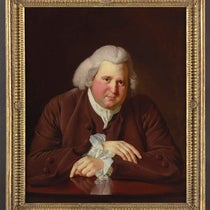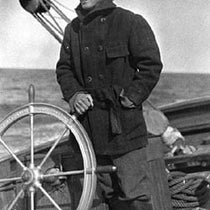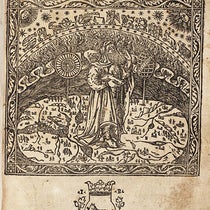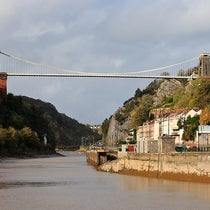Scientist of the Day - Amiel Weeks Whipple
Amiel Weeks Whipple, a U.S. Army officer and engineer, died May 7, 1863, having been born on Oct. 21, 1817, in Greenwich, Mass. He graduated from the U.S. Military Academy in 1841, with a specialty in surveying. He was theassistant surveyor for the U.S. Boundary Commission when they were trying to work out the boundary between the U.S. and Mexico from 1848 to 1853.
In 1853, the U.S. Congress appropriated $150,000 for four western surveys, in search of the best route for a transcontinental railroad. Whipple was given charge of the expedition that explored the 35th parallel, from Fort Smith, Arkansas, through Oklahoma, Texas, New Mexico, and Arizona, all the way to Los Angeles. The expedition took about 8 months, from July 1853 to March 1854, and as it was intended to be a scientific expedition, Whipple took along an astronomer, a botanist, a zoologist, a geologist, another topographic engineer, and an artist. Many of his team would later distinguish themselves on other western expeditions; examples are Albert H. Campbell and Joseph Ives.
The official narrative of the Whipple expedition was published as volume 3 of the Pacific Railroad Reports, which in its 13 volumes encompassed all four of the parallel surveys plus three California surveys. Whipple's narrative differed from some of the others in that he was very interested in ethnography and was fascinated by native American culture, so Whipple’s volume has a number of chromolithographs of pueblos (fourth image), native peoples (seventh image) and Indian artifacts (eighth image). Other lithographs give a good account of the landscape they passed through, so you can see a bivouac (first image), the San Francisco mountains in Arizona (fifth image), and a stratified hill that Whipple called Pyramid Mountain (sixth image).
We displayed Whipple's volume of the Pacific Railroad Reports, and most of the other volumes, in our 2004 exhibition, Science Goes West; indeed, it was our possession of the complete set of Reports that was the driving force behind the exhibit, since each of the volumes contains dozens of chromolithographs of all manner of Western sights, from buffalo herds to giant sequoias to vistas of the Grand Canyon. It is a pity that we never had the resources to put this exhibit online, for it has always been one of my favorite exhibitions. It was curated by Bruce Bradley and myself.
As for Whipple, he spent several years as head of the Great Lakes Lighthouse district, which must have been thrilling, but then war broke out, and he served as topographical engineer in the Army of the Potomac under General McClellan in 1861-2. As a brigadier general, he fought at Fredericksburg and survived, but he was badly wounded at Chancellorsville, and since he lingered on four days, he was able to get several deathbed promotions, dying as a major general on May 7, 1863. I am not sure his swollen rank was much consolation. He was 44 years old at his death.
We first wrote about Whipple exactly 10 years ago, in this post. For this update, we have expanded the text, zoomed in on the images to offer more detail, added the title page of his report, and provided captions for all images. We also found a good version of the one known portrait of Whipple (second image). And as a final feature to justify a new post, we add a complete list of all the Pacific Railroad Survey members that we have profiled in the past as Scientists of the Day, with links to their entries. We will be able to refer back to this list in future posts. The list includes: Edward Beckwith, Albert H. Campbell, John Gunnison, Andrew Humphreys, Joseph Ives, Balduin Möllhausen, John Mix Stanley, Howard Stansbury, Isaac Stevens, and Gouverneur Warren. Surprisingly, there are a half-dozen worthy Pacific Railroad Survey field artists and naturalists that await their inclusion.
William B. Ashworth, Jr., Consultant for the History of Science, Linda Hall Library and Associate Professor emeritus, Department of History, University of Missouri-Kansas City. Comments or corrections are welcome; please direct to ashworthw@umkc.edu.

![Bivouac on Jan. 26 [1854], chromolithograph from a sketch by Balduin Möllhausen, Explorations and Surveys for a Railroad Route from the Mississippi River to the Pacific Ocean: Route near the Thirty-Fifth Parallel, by Amiel W. Whipple (Pacific Railroad Report, 3), 1856 (Linda Hall Library)](https://assets-us-01.kc-usercontent.com:443/9dd25524-761a-000d-d79f-86a5086d4774/55140a90-4b5d-4dac-832c-5def5cb51a10/Whipple1_cover.jpg?w=534&h=582&auto=format&q=75&fit=crop)
![Bivouac on Jan. 26 [1854], chromolithograph from a sketch by Balduin Möllhausen, Explorations and Surveys for a Railroad Route from the Mississippi River to the Pacific Ocean: Route near the Thirty-Fifth Parallel, by Amiel W. Whipple (Pacific Railroad Report, 3), 1856 (Linda Hall Library)](https://assets-us-01.kc-usercontent.com:443/9dd25524-761a-000d-d79f-86a5086d4774/93941d7e-0bf4-443a-bdc7-a12d83cb22eb/Whipple1.jpg?w=800&h=551&auto=format&q=75&fit=crop)









![Using an astrolabe to measure the depth of a well, woodcut in Elucidatio fabricae vsusq[ue] astrolabii, by Johannes Stöffler, 1513 (Linda Hall Library)](https://assets-us-01.kc-usercontent.com:443/9dd25524-761a-000d-d79f-86a5086d4774/a998eb50-55d2-4a88-ace2-a50aa5fa86e7/Stoffler%201.jpg?w=210&h=210&auto=format&fit=crop)

